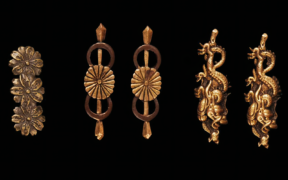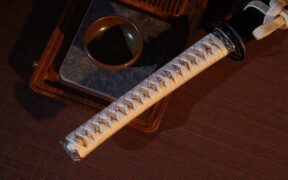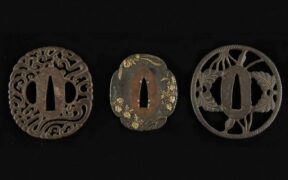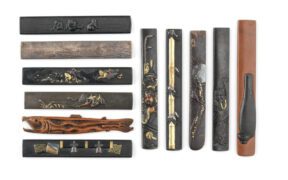What is Menuki? Exploring the Art of Sword-Grip Ornaments
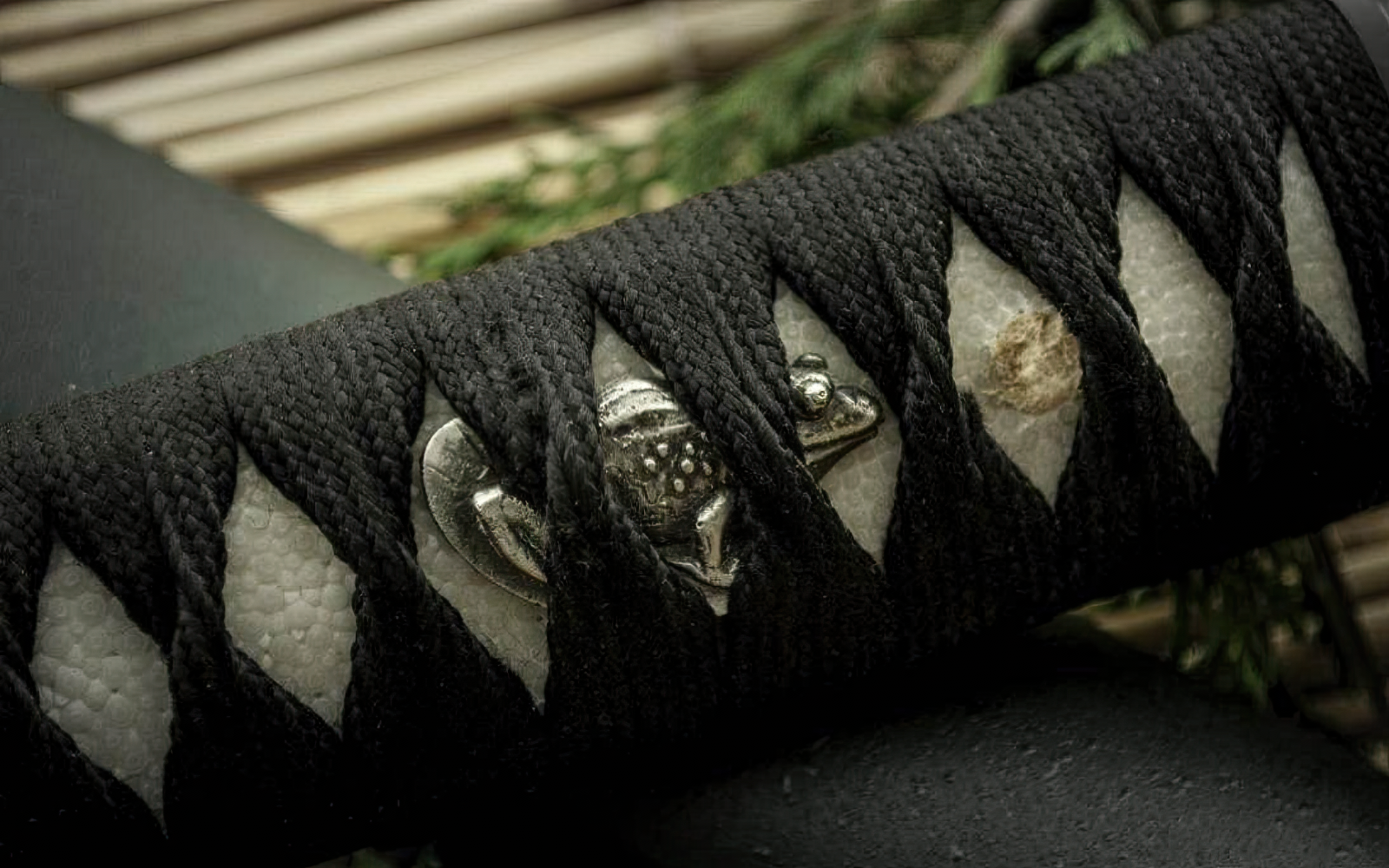
Menuki are small metal decorative fittings traditionally placed under the braided hilt wrappings of Japanese swords and daggers. Although originally intended to be functional, they later became almost purely ornamental. Considered one of the Japanese sword mountings, they showcase the expertise of numerous craftsmen, evolving into coveted collector’s items today.
Anatomy and Related Terminologies
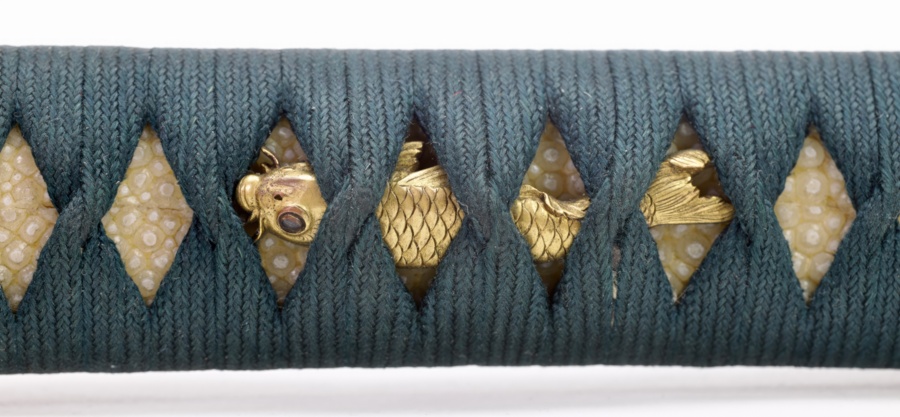
- Menuki (目貫) – The metal ornaments on the sides of a Japanese sword hilt, serving as the most prominent fittings on unwrapped rayskin covered hilts and located beneath the braided silk wrapping on most swords.
- Chin (鎮) – An obsolete term for menuki, no longer in common use.
- Kibata (際端) – The edges of a menuki, a term also applicable to the edges of a kozuka (utility knife handle).
- Kibata-mei (際端銘) – The signature or inscription on the edge (kibata) of a menuki, if present.
- Kon (根) – The stems on the back of menuki (if present). The term kon literally means root and is sometimes called ashi (足), meaning foot. It can be round, oval, square, or rectangular.
- Chikaragane (力金) – The reinforcing metal for the root (kon) of menuki, soldered on the back side. When these small metal stripes are arranged at all four sides of the root, they are referred to as yotsu-kon, meaning four-root.
- Kodogu (小道具) – A collective term for sword fittings, including the menuki, kozuka (utility knife handle), and kogai (hairdressing tool). It literally means “small utensils” or “fittings”.
Craftsmanship and Design of Menuki
The menuki ornaments were crafted from fine materials and traditional Japanese metalworking techniques, making them works of art.
Material and Construction
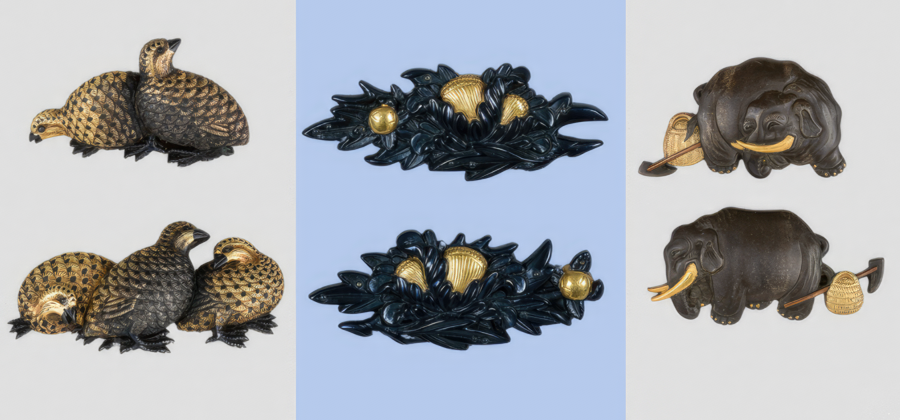
Many fine menuki were made of shakudo—a Japanese alloy containing gold and copper—that was artificially patinated into a dark, raven black patina with a silky gloss finish. Others were crafted from shibuichi, a copper-silver alloy that was patinated in subtle colors, such as greenish gray, brown, or blue.
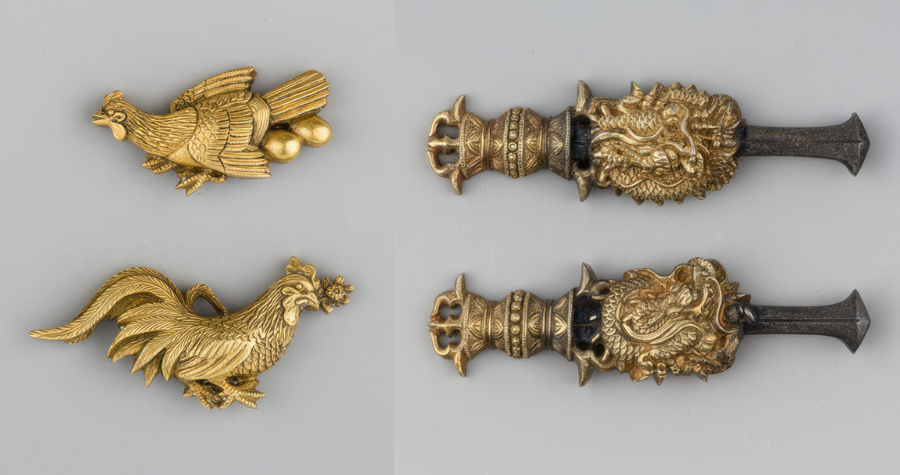
Some luxurious menuki were made of pure precious metals, such as gold or silver, but there were also ones made from brass (shinchu), copper, or iron. Some sword fitting makers also used a mix of different metals in a menuki, such as gold and shibuichi or gold and shakudo, and other uncommon metal combinations.
Practical and Decorative Function
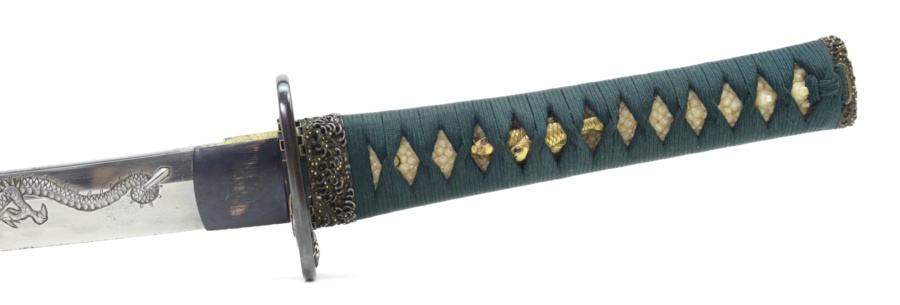
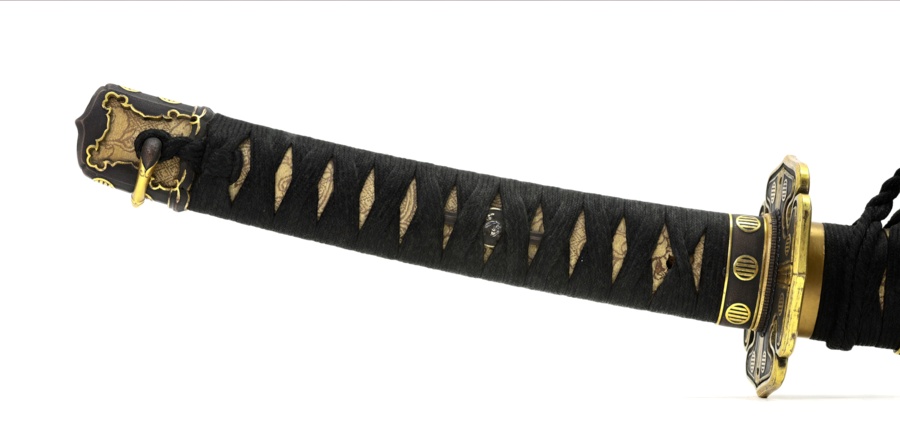
The original function of menuki was as the ornamental head of a metal mekugi, a peg which secures the blade’s tang on the hilt. Over time, its role became purely ornamental. It also serves a practical purpose by filling the gap in the pam, providing a better grip and enhancing the overall handling of the sword.
Placement on the Hilt
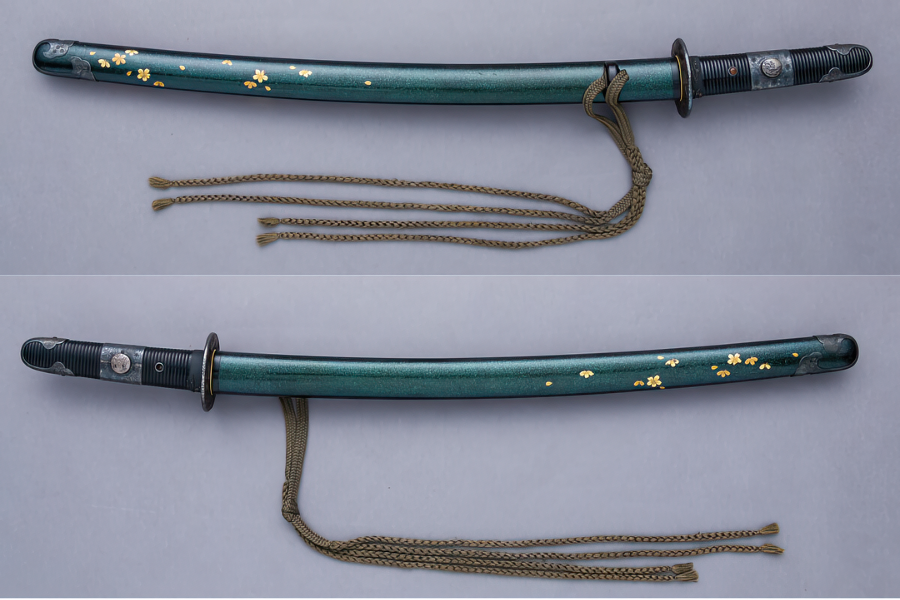
The earlier menuki which served as a metal peg, featured hollow negative and positive parts to prevent it from falling out of the hilt. Therefore, earlier pairs of menuki were also positioned symmetrically on both sides of the hilt. It is important to note that some menuki are simply glued onto the hilt asymmetrically and serves no functional purpose.
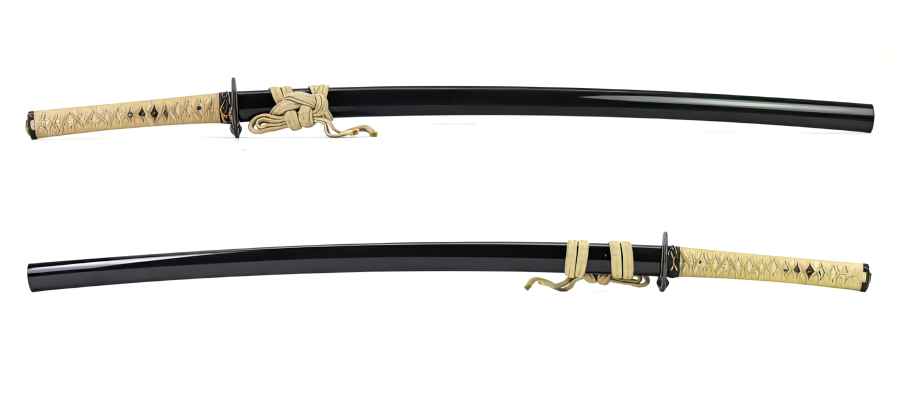
When they became purely decorative, a pair of menuki were placed asymmetrically on the sides of the hilt: the one on the front side leans toward the ferrule (fuchi), while the one on the back leans toward the pommel cap (kashira). Japanese sword hilts are often wrapped in ray-skin, with a pair of menuki placed under the braided silk wrapping.

Menuki in Traditional Sword Mountings
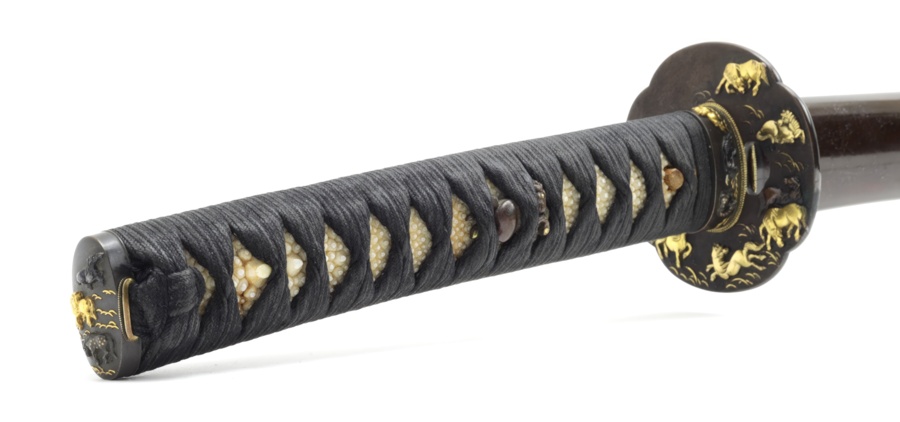
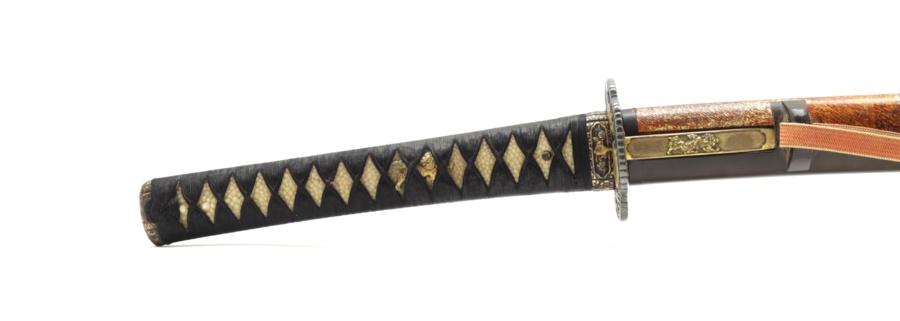
In a koshirae, a menuki often complements the theme of other hilt mounts consisting of a sword guard (tsuba), ferrule (fuchi), and pommel cap (kashira). A menuki may also match the design on a kozuka (knife handle) or kogai (hairdressing tool) on the side of a scabbard.
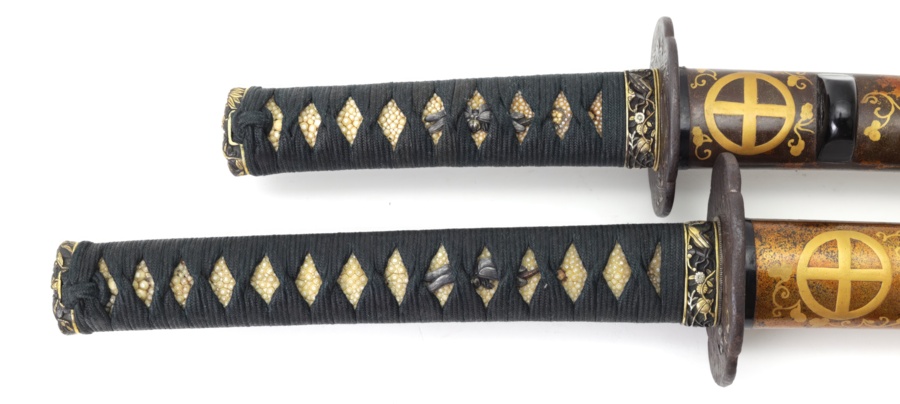
The samurai class had the privilege to wear the daisho, a pair of swords consisting of a katana and a wakizashi. For a daisho’s koshirae, the menuki of the two swords were made with matching designs, reflecting the taste and wealth of a samurai.
Traditional Japanese Metalworking Techniques
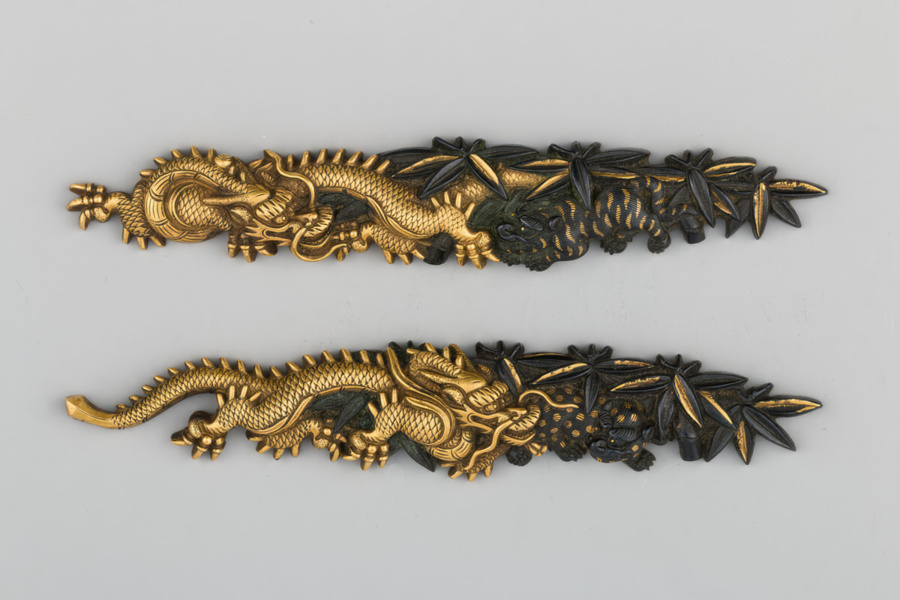
The expertise of a sword fitting maker in traditional Japanese metalworking techniques determines the craftsmanship and design of menuki. Menuki are crafted using traditional hammering, carving, and gilding techniques known in Japan. Generally, they are made from a single piece of metal shaped through hammering and then further refined.
If the hammering is done from the front, it is called heshikomi (meaning “to push into”). If the hammering is done from the back, it is called uchidashi or embossing. Also, a menuki can be made by a carving technique called katachibori (meaning “form” or “shape carving”), in which the design defines its own outline.
A menuki can also be made using the traditional iroe technique of coloring a motif, similar to gilding. For instance, the material is covered with a silver foil or thin gold, which is hammered on the surface of the ground. This technique was already in use as early as the Kofun and Nara periods.
